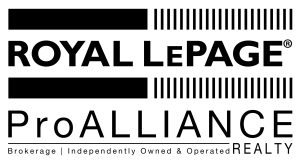One in six Canadians (14.3%) live with a disability and one third of all Canadians 65 years or over have mobility problems. We hear more and more about communities becoming aware of accessibility to and within public venues but what about accessibility within our own homes? Over a three week series in July on Reality Realty, the real estate radio talk show that I host on Northumberland 89.7 FM, my special guest, Carol Anne Bell-Smith and I have discussed various aspects of home accessibility. The motivation to make your home more accessible could be due to the disability of someone sharing your own roof, it may have to do with staying in your home during your later years and “aging in place”, or you might be thinking of friends and family who require accessibility features when they come to visit.
Carol Anne explained the term “universal design” as it relates to making a home accessible. It is ensuring that the design of the home will be:
- Accessible to all people
- Aesthetic and usable to all (e.g. pots and pan drawers – definite accessibility feature while being appreciated by everyone).
- Simple and intuitive
- Considering tolerance for error
- Require low physical effort
Here are a few ways that you can ensure your home is accessible to everyone:
- Smooth, ground level entrances without stairs
- Ramp access replacing stairs
- Surface textures that require low force to traverse on level, less than 5 pounds force per 120 pounds rolling force
- Surfaces that are stable, firm, and slip resistant
- Wide interior doors (3’0″), hallways, and alcoves with 60″ × 60″ turning space at doors and dead-ends
- Lever handles for opening doors rather than twisting knobs
- Components that require less than 5 pounds of force to operate
- Light switches with large flat panels rather than small toggle switches
- Buttons and other controls that can be distinguished by touch
- Bright and appropriate lighting, particularly task lighting
- Auditory output, redundant with information on visual displays
- Visual output redundant with information in auditory output
- Contrast controls on visual output
If you missed our Reality Realty series on Accessible Homes And Universal Design you can click on the link below to listen and hear more about the best ways to make your home accessible for living without creating an “institutional” look and the realities of buying and selling homes with accessibility in mind.

